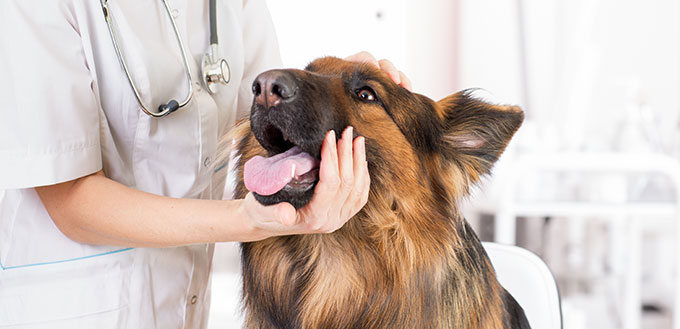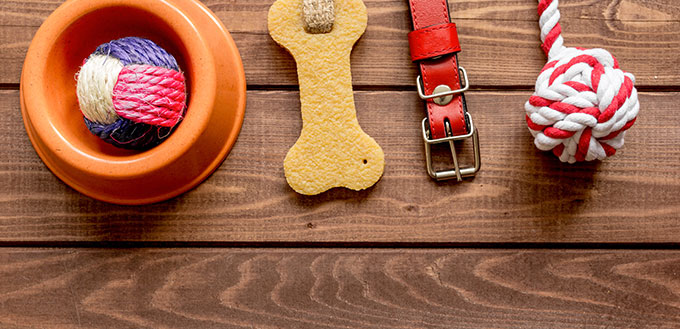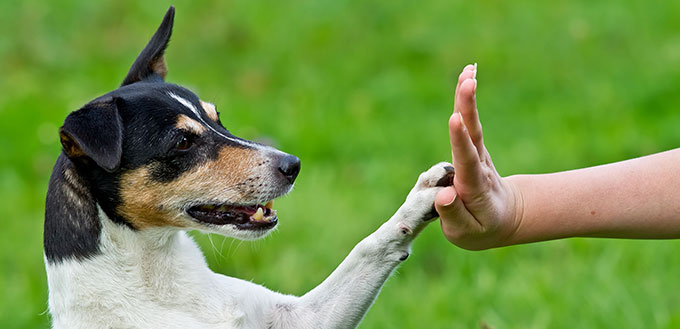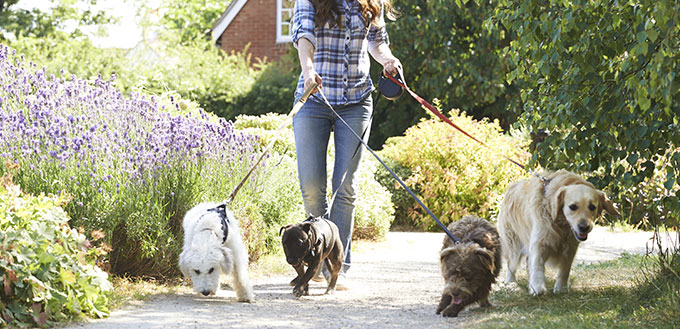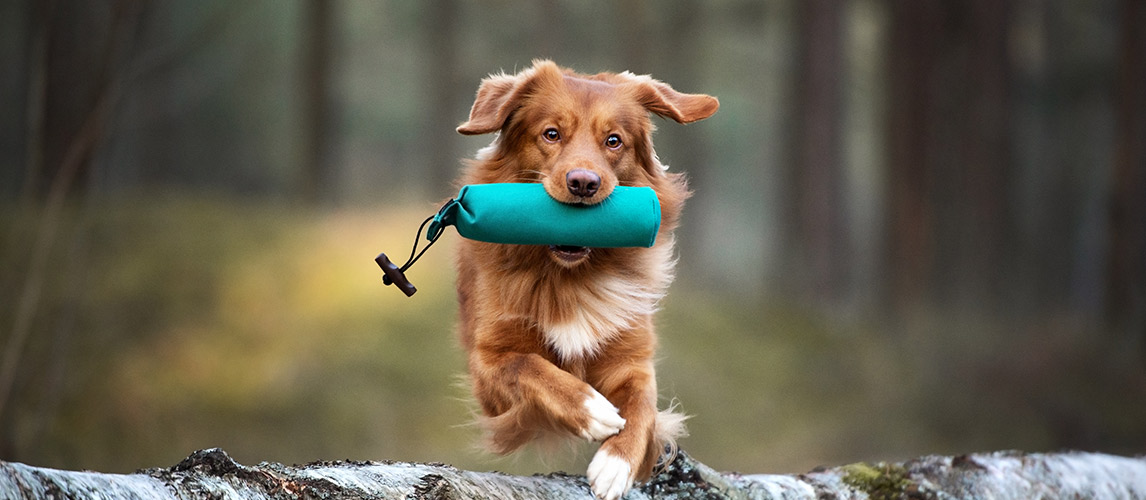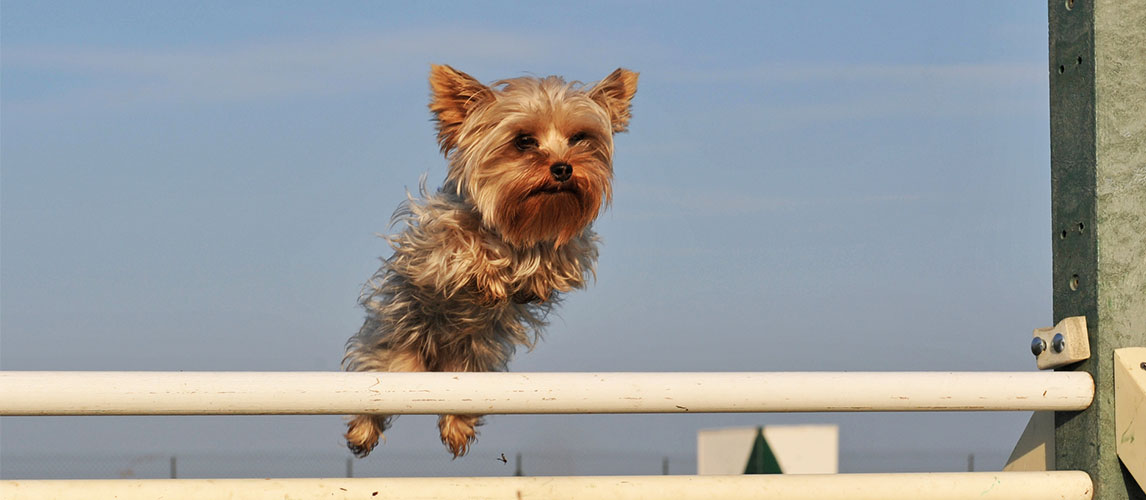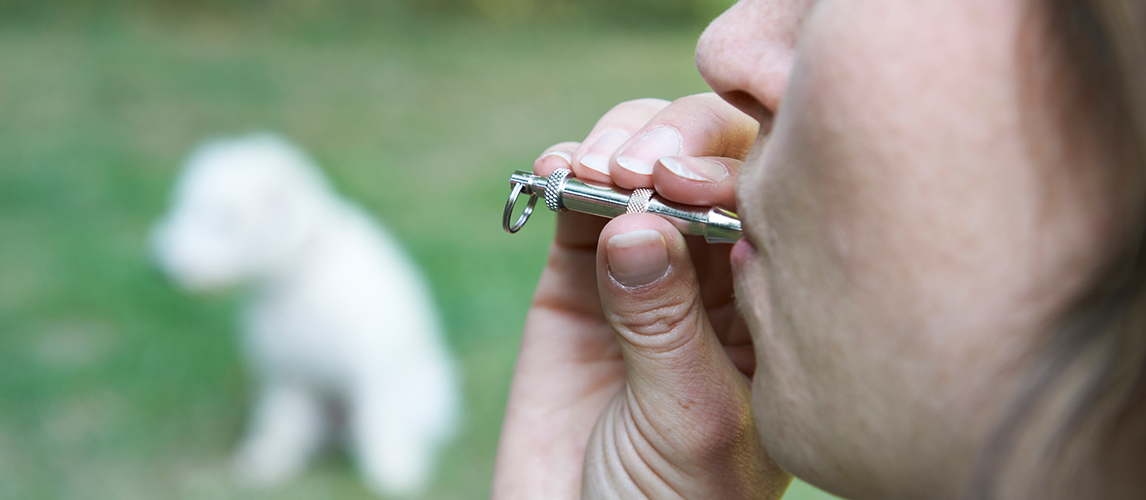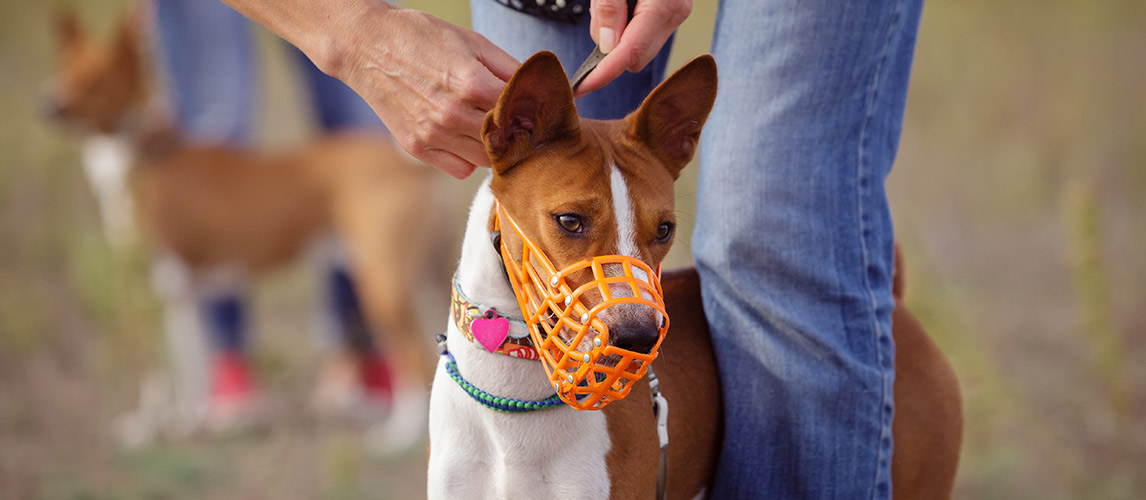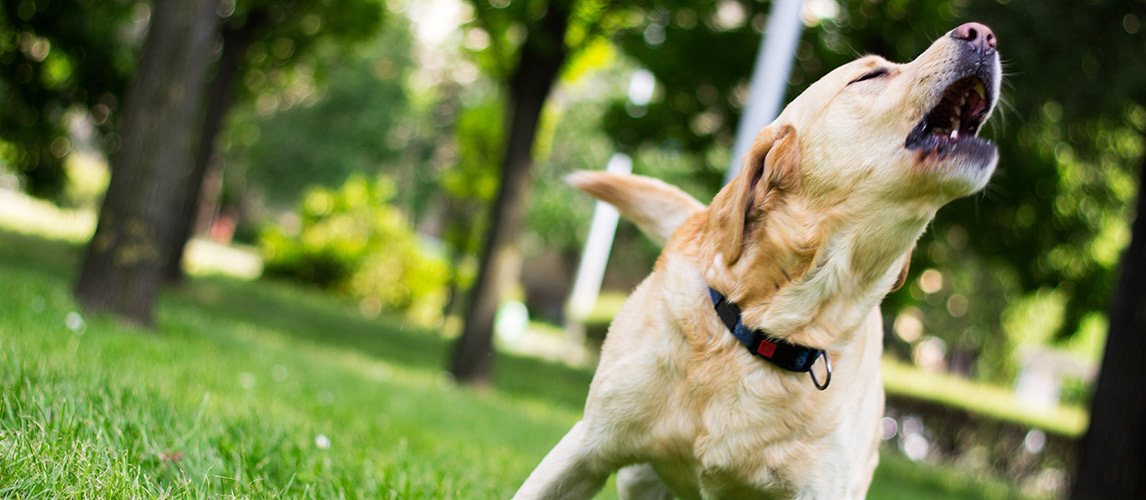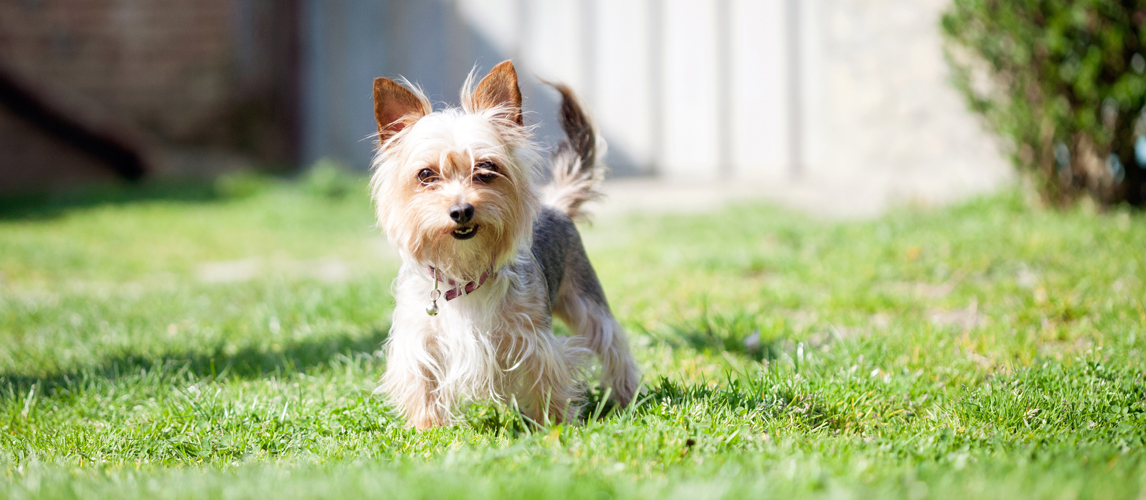Are you thinking of getting your first dog? Though every breed has its own specifics that are worth looking into when it comes to their care requirements, there are some general rules of thumb when it comes to dog care that are the same across the board. We are hoping that this guide for how to take care of a dog will help you to understand the core requirements for taking care of your new pup’s health and happiness, before committing to taking care of a pooch of your own.
Feed Your Dog Properly
The first thing you want to be sure of is feeding your dog properly. Picking the right diet to provide your dog with balanced meals that agree with their digestive system is tricky stuff, and often getting their diet right comes with experience and trial and error.
Certain dog breeds have dietary requirements or suggestions that are worth knowing ahead of time, but here are the three main diets you can choose from when picking for your pooch.
Raw Dog Food
Raw feed diets seem to be rising in popularity. Raw diets utilize totally natural ingredients including some human foods such as vegetables, as well as including eggshells, raw meat, and whole bones.
Raw feed diets are designed to cater to the natural instinct of all dogs in which they would forage for similar foods in the wild. The only problem with this food choice is that the cost of raw food can be quite high, and raw food is more high maintenance in terms of having to keep on top of cleanliness with every meal. You may also consider freeze dried dog food, which is mostly raw but most of the moisture was taken out so that it would last longer.
Biscuits / Dry Kibble
Dry kibble or otherwise known as biscuit dog food is the most common method of feeding a dog that is used worldwide. It is cost-effective, low maintenance, and lasts a lot longer than fresh food. When feeding your dog dry food, always follow the serving recommendations on the packaging as it will be based on your dog’s size.
The main thing to look out for when shopping for kibble or dry dog food is to look out for fillers or bulking agents in the food. Maybe cheaper brands use unnecessary fillers that provide little to no nutritional value for your dog. You want to look for a food brand rich in vitamins and nutrients, and so research is key in making sure you get what you’re paying for. Many dog breeds also benefit from a high protein diet, as many dogs are highly active and need the protein to help their muscles to recover at the end of the day.
Wet Dog Food
Some pet owners opt for wet food as the best option for their dog, especially for dogs that may struggle to keep their weight up because of a high metabolism.
Wet food will definitely keep your dog happy! But it can be a bit more expensive than dry kibble in the long run, and wet dog food runs the risk of causing obesity in adult dogs that can’t regulate their weight as easily.
There is always the option of mixing wet food with dry to help make the dry a little bit more interesting without the risk of adding too much unnecessary fat to your dog’s food.
Give Your Dog Plenty of Exercise
Every dog needs the right kind of exercise for its breed. The smaller dog breeds usually don’t need to travel as far or walk as much as larger breeds because they can get worn out quicker.
Every pet parent needs to consider how they will provide their dog with the exercise they need. Here are a few of our favorites as options for exercising your pooch:
- Take your dog to the local dog park
- Take your dog hiking
- Use skates to keep up more speed so your dog can run
- Take your dog to an agility course
- Try out doggie swimming lessons
- Play tug-of-war with them
- Enter your dog in doggie sports
- Take them to a dog trainer
The most important thing t remember is to take your dog for daily walks, preferably 1-2 walks a day, unless you are advised against it. Dogs with health problems such as arthritis may not be suited for large amounts of exercise and will require alternative forms of stimulation.
Mental Exercise is Important
When planning to take care of your own pet, you should also think of what type of mental stimulation they would benefit from. It is all well and good to stick a collar on your dog and take them for a run around the local field, but they require mental stimulation as well.
Boredom is the biggest cause for destruction with most dogs, as they can turn towards destructive behavior as a way to entertain themselves. A few of the best ways to provide a dog with mental stimulation are:
- Dog Puzzle Toys
- Socialization
- Daily Challenges (change their activities daily)
- Training
- Playtime
How Best to Deal With Destructive Behavior
Sadly, when a dog displays this kind of behavior it often leads to animal cruelty or the dog ending up in an animal shelter if the owner is unable to find a way to handle it. There are several causes of destructive behavior such as; separation anxiety, boredom, anxiety, stress, depression.
Being aware of the possibility of destruction in your household (which is surprisingly common, especially with a puppy), can help you to prepare ways of dealing with it. We do have some recommended ways to try and prevent these things from happening:
- Crate training: This can help with dogs that struggle with anxiety, as it provides them with a sheltered safe space to hide away in if they feel the need to withdraw.
- Try not to leave for too long: If you have a dog that struggles with separation anxiety, a dog sitter may be needed so that they’re not left alone for too long.
- Play with them in the yard: By giving your pup a chance to charge around in a place as simple as the backyard can help them to work through some of their excess energy.
- Extra training: If they are an intelligent breed or working breed, they would benefit a lot from extra training to keep their minds active.
Should I Get a Dog if I Work All Day?
This will depend on how you plan to deal with your dog whilst you are out at work. The dog schedule for working owners often consists of being left for around 8 hours a dog, but with the correct entertainment, they can do just fine in your absence, such as being left with toys, treats, and games.
Puppies, in particular, can find it more difficult to be separated from their family for longer periods of time, and so a dog sitter during these times may be a good idea, just for peace of mind for yourself and a comforter for your puppy.
General Health Tips for Your Dog
Here are few general tips that may be useful to know throughout your dog’s lifespan, to help you to spot potential health problems.
- Feel their nose: Your dog’s nose should always feel wet, this lets you know that they are properly hydrated. If their nose feels dry you may want to top up their water bowl and make sure they are drinking. The moisture of their nose might vary slightly depending on the time of year, but it should always feel slightly wet and cool.
- Check their poops: It sounds gross, but you should always keep an eye on your dog’s stools if you can. Changes in consistency and color, much like humans, can indicate problems with their health and may require a trip to the vet or animal clinic.
- Make sure they’re eating: Sudden changes in appetite can indicate a variety of problems including pain, nausea, disease, or constipation.
- Watch their interaction with you: If they seem to be withdrawing from interacting with you and the family there could be a reason for it ranging from stress, boredom, or depression to pain or illness.
- Keep an eye on their teeth: Dental problems are extremely common in most dogs, especially as they get older. Purchase a dog toothbrush and keep on top of their dental hygiene before the issues start.
Training Your Dog
Some dogs require rigorous training, such as working dogs, with a strict regime and constant restrictions, where other dogs are quite happy with knowing the basics. The main thing you need to know when it comes to training your new furry friend is that positive reinforcement is always the best way to go.
Even though some breeds may need more of a firm hand when it comes to training, always bring your new pup home with the intention of using positive reinforcement when you start training them. So that means go to the pet store and prepare plenty of treats, as well as considering what positive reactions you will use when your pup does well. Keeping your reaction consistent will help them to know when they have done something correctly.
Give your dog consistent, training sessions, using plenty of repetition and treats to reinforce good behavior. Your new puppy will be looking to you for guidance and instruction, so perseverance and determination is extremely important in giving them a memorable training experience that will help them to retain their training into adulthood.
Obedience Training Classes
This is not something that every dog owner will need to do, but it is part of the puppy training experience for a lot of them, especially with the more stubborn breeds. There is no shame in taking your puppy, or even your adult dog to a professional dog trainer if you are struggling to yield a good result from their training sessions at home.
Obedience training with a professional often helps to secure the relationship between owner and puppy, as they work together to understand one another and for a connection to make training run more smoothly.
Having A Dog With A Family
If you’re considering getting a dog for a family with children, be sure to check which dogs do best in a family setting. Some breeds can be more standoffish and are not ideally suited for family life, whereas other dog breeds are known as companion dogs, meaning they are ideally suited for such a life.
It is also incredibly important that you teach any young children how to handle a dog properly, as even the most patient dog will only be so patient if a young child is pulling on their tail or fur. It cannot be entirely up to the dog to maintain their cool around young children if they are not taught to be respectful.
Adopt Don’t Shop
If you are thinking of getting a puppy, if it is possible to do so, we implore you to look at dog shelters and fosters and rescue a dog instead of purchasing a puppy. Getting a puppy from a breeder only encourages further breeding, when there is currently an overabundance of dogs in shelters waiting for their forever home.
The best way to find a dog to adopt is to contact your local rescue or shelter for additional information. You can also find dog rescues specifically dedicated to particular breeds if you have a certain dog in mind that you would like to bring home.
9 Quick Dog Care Tips
- Make up a first aid kit just for your pet: Accidents can happen around the home with dogs just as easily as they can with humans. Keeping a pet first aid bag around the house can be extremely helpful in a pinch.
- Make regular veterinarian appointments: Ideally, you will want to take your furry friend for annual vet appointments to keep on top of things.
- Get pet insurance: Pet insurance is an extremely important part of dog ownership. You can accrue any number of unexpected vet bills throughout your dog’s life span, so keep your dog covered with pet insurance to protect both your furry family member and yourself.
- Purposeful playtime: Train your dog without them even noticing! By playing with their feet, mouth, ears, and belly during playtime you can create a positive association with being handled in this way, making nail clipping and veterinarian checkups run a bit smoother.
- Keep toxins out of the way: Don’t let your dog get near to any dangerous chemicals like bleach or cleaning supplies because as puppies they will likely try to chew through these containers whilst they are teething and exploring their environment. This also includes keeping any veterinary medicine out of reach, you don’t want your new dog eating more of their medication than they are prescribed to have.
- Dogs need a safe space: Always make sure that you leave your dog alone when they are in their safe space to maintain their sense of security when they are in seclusion. Everyone needs a space to call their own, let them have theirs.
- Look out for seasonal allergies: You’d be surprised how many dogs struggle with seasonal allergies which usually cause a lot of skin irritation. By washing your dog’s bed, blankets, and soft toys weekly, you can minimize their pollen exposure.
- Combat boredom with variety: If your dog is getting bored a lot during the day and becoming destructive, a simple way to keep them more engaged is to change their activities each day, whether it be where you take them for a walk or what toys you leave for them. Rather than giving them every toy they have, select a couple for them each day and rotate around them from day to day to keep their interest fresh.
- Get your dog chipped: It is so important that your dog is chipped with an ID tag in case they ever become lost. Chipping your dog means anyone that finds them will be able to trace them back to you simply by having them scanned with their local veterinarian or even some pet stores.
FAQs:
Q: Is it hard to take care of a dog?
A: This greatly depends on the breed you decide to go for. Some breeds are considered high maintenance, be it because of their personality, grooming needs, behavior, health problems, activity energy levels, etc. But the same also goes the other way; other breeds are considered to be low maintenance and therefore easier to take care of.
The basics of caring for a dog are very similar no matter which dog you go for, but if you are wanting to give your dog the life they truly deserve you need to know everything about the breed you are choosing to go with in order to raise and care for them properly.
Puppies, in particular, are known for being difficult, due to having to be potty trained and obedience train them as they go through their adolescent phase.
Q: How much money do you need to take care of a dog?
A: Dog ownership is not something to be taken lightly if you’re wanting to take care of your dog properly. The cost of owning taking care of your dog can vary depending on where you live, the breed you own, their dietary requirements, their exercise requirements, and a myriad of other expenses. The overall average yearly cost for a dog goes anywhere from $1,500 to $4,500.
One of the most expensive things, if you were to chose to do it, is having a dog walker. The average dog walker costs up to $20 per walk, meaning if you had a full-time dog walker it could cost up to $5,200 a year.
Q: Is pet insurance worth the cost? Should I get it?
A: It is always worth having pet insurance. No dog breeds are guaranteed to be perfectly healthy for their entire life, and when pet insurance only costs an average of $20-40 per month, it is far better to be covered rather than have to deal with a surprise veterinarian bill which would definitely cost a LOT more than that.
As your dog grows older they are at much higher risk of developing complicated health problems or dental problems that can be extremely expensive to fix without insurance. Insurance protects you and allows you to make sure your dog is cared for properly in its time of need.
Sources:
- How To Make Your New Dog Feel Comfortable In Your Home, The Humane Society
- Senior Pet Care Tips, The MSPCA–Angell
- General Dog Care, The ASPCA
- Dog Foster Care Manual, Best Friends Animal Society
Note: The advice provided in this post is intended for informational purposes and does not constitute medical advice regarding pets. For an accurate diagnosis of your pet's condition, please make an appointment with your vet.


